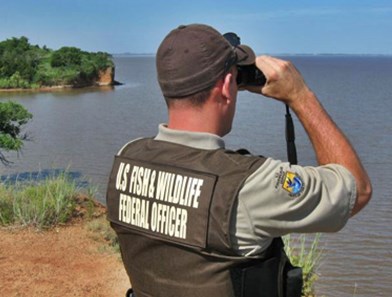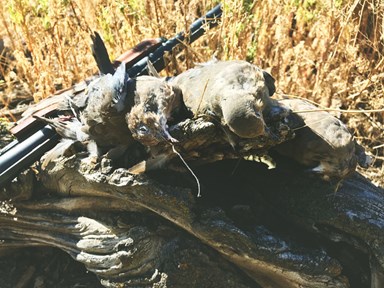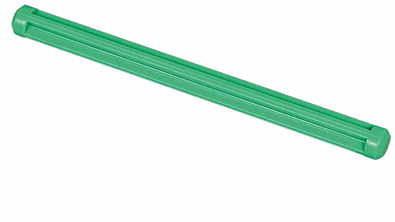Waiting In the Wings: 6 Critical Dove-Hunting Facts
Opening Day is just around the corner! Be sure to adhere to these important rules to ensure you are a successful and legal dove hunter.
by HEIDI LYN RAO posted on August 23, 2021
There is only one way to describe dove hunting: FUN! In many states (especially Texas—my home state), dove hunting is a social event, culminating with cookouts and barbeques replete with music and dancing. Dove season—even if you don’t hunt them—puts a smile on the face of all hunters. That’s because dove season represents the unofficial start of the hunting season—and the official countdown to all the other hunting.
If you are one the many who are looking forward to Opening Day—which usually begins anywhere onward from September 1, depending on your state—now’s the time to make sure you are properly equipped to be both a successful and legal hunter.
Federal Laws
Dove are considered migratory game birds, thus where it is legal to hunt, all native doves are state and federally protected. This means that you can be checked by both state and federal game wardens—and likewise can be found to have committed dual violations. State regulations vary, but federal regulations regarding dove hunting are the same in every state. Be sure to check the laws in your specific state to make sure that you are in compliance.

There are six primary areas of federal laws that relate to dove hunting: daily bag and possession limits; legal shotguns; hunting over a baited field; using live birds as decoys; hunting from a motorized vehicle; and using a motorized or sailing vehicle to rally birds. These federal laws are mirrored in the state you are in so there is uniformity between the state and the feds.
1. Daily Bag and Possession Limits
Each state sets its limits in an agreement with the U.S. Fish and Wildlife Service (USFWS). This ensures there are not two different bag limits within each state. Typically, there is an established daily bag limit and an established possession limit. The daily bag limit is the maximum number of doves that you can take per day.

The possession limit is how many doves you are allowed to possess over a certain number of days. For example, your daily bag limit may be 15 birds, but your possession limit might be 45 birds. This usually applies to those who might be spending a weekend hunting doves. It is important to remember that any unrecoverable game that you have shot is legally part of your daily bag or possession limit.
2. Legal Shotguns
Just about every type of shotgun can be used to hunt doves. I have seen everything used, from single-shot .410 shotguns, pump-actions, semi-automatics, over/unders and side-by-sides. According to state law and the USFWS, a legal shotgun is one that is only capable of holding only three shells.

That means two in the magazine and one in the chamber. If you are using a single shot, an over-under or a side-by-side shotgun, this is not an issue. If you are using a pump action or a semi-automatic shotgun, this is accomplished by inserting a plug into the shotgun’s magazine. This limits the number of shells in the magazine to two. A lawful plug is one that can only be inserted or removed by disassembling the shotgun.
3. Hunting Over a Baited Field
It is prohibited to dove hunt over a baited field. This can be a bit confusing, so I urge you to read the explanation and definition of baited fields provided by the USFWS. It is clear that if you walk out in the field and spread corn, wheat, milo, eggshell, oyster shell or another attractant, you are baiting a field to attract doves. But since doves are hunted over agricultural land used for farming etc., you must understand the difference between what is allowed and not allowed, as there are numerous nuances in this law. For example, if a neighboring landowner baited his field, and it can be determined the doves were drawn over your field, you could be liable—even if you did not know the neighbor baited his or her field. Additionally, common and unintentional violations can be committed when, for example, you have a deer feeder on your property or just a bird feeder near your house. If it can be determined that these feeders are drawing doves, you are in violation of federal law. Devote the requisite time to understanding these laws outlined here by the USFWS.
4. Using Live Birds as Decoys
The use of any live bird, either wild or domestic, is illegal. This means you cannot down a bird and leave it on the ground, live or dead, with the intention of hunting over it to attract another. This could also include hunting around a chicken coop, if the chickens are not concealed and feed is present.
5. Hunting From a Motorized Vehicle
It is illegal to hunt from a motorized vehicle. Most hunters would consider it unethical to hunt birds from a moving vehicle. But it is also illegal to hunt from a stationary vehicle. This means that if you are hunting with friends around the truck and you happen to sit on the tailgate and shoot at a dove, you are violating the law. The puzzling part is that if you sit on a chair, bucket or stump next to the tailgate, you are within the law. The exception to this law is if the hunter is a quadriplegic and/or has a single or double leg amputation.
6. Using a Motorized or Sailing Vehicle to Rally Birds
This is a method of driving through one end of the field to scatter the doves toward the hunters. This would include a farmer discing a neighboring field and you are taking advantage of the concentrating, driving, rallying or stirring up of migratory birds.
There is no such thing as a bad day hunting! As long as you do your research, know which birds are legal to hunt, and follow the hunting rules and regulations in your area, memories will be made to last a lifetime.
